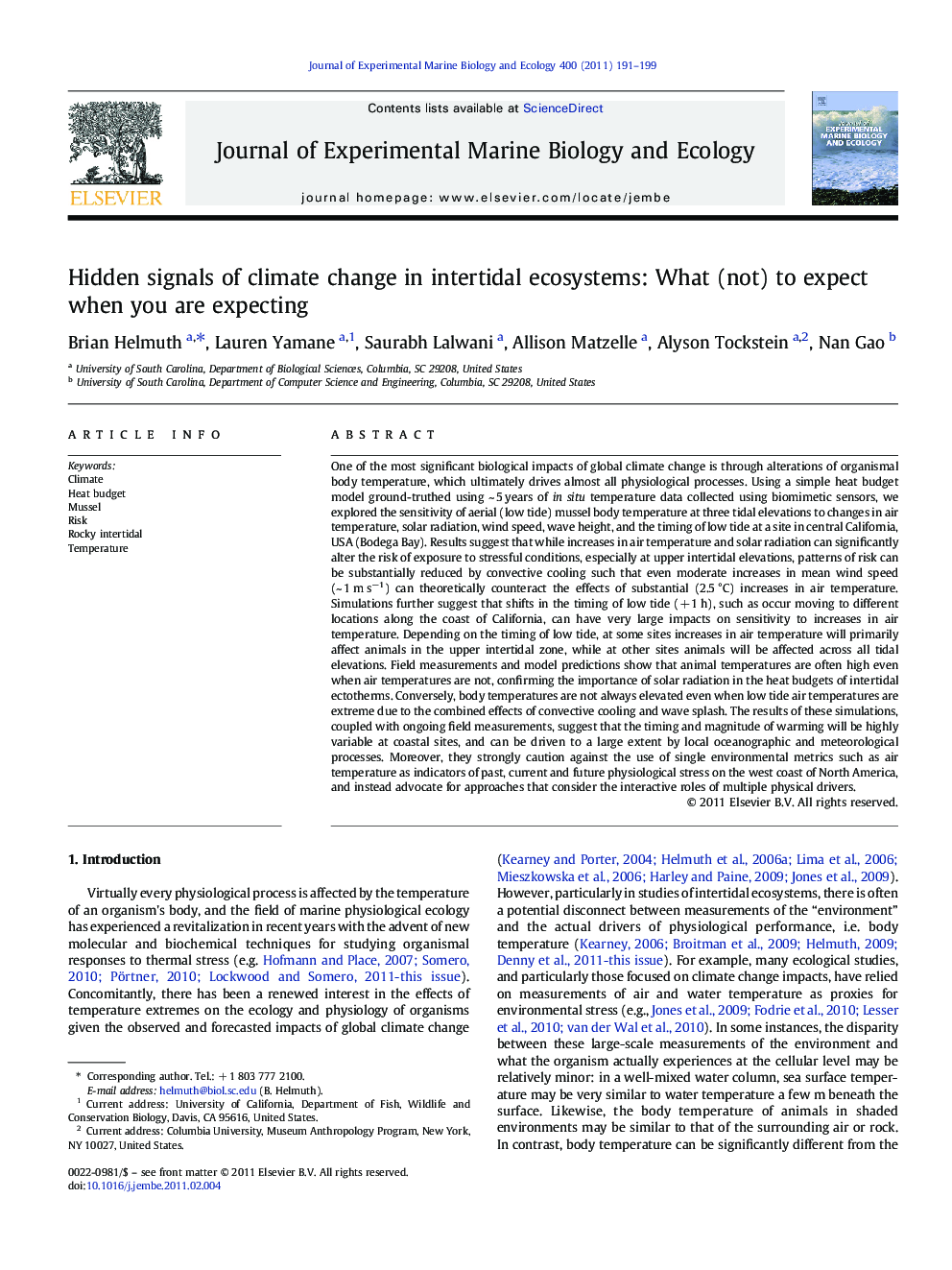| کد مقاله | کد نشریه | سال انتشار | مقاله انگلیسی | نسخه تمام متن |
|---|---|---|---|---|
| 4396347 | 1618463 | 2011 | 9 صفحه PDF | دانلود رایگان |

One of the most significant biological impacts of global climate change is through alterations of organismal body temperature, which ultimately drives almost all physiological processes. Using a simple heat budget model ground-truthed using ~ 5 years of in situ temperature data collected using biomimetic sensors, we explored the sensitivity of aerial (low tide) mussel body temperature at three tidal elevations to changes in air temperature, solar radiation, wind speed, wave height, and the timing of low tide at a site in central California, USA (Bodega Bay). Results suggest that while increases in air temperature and solar radiation can significantly alter the risk of exposure to stressful conditions, especially at upper intertidal elevations, patterns of risk can be substantially reduced by convective cooling such that even moderate increases in mean wind speed (~ 1 m s−1) can theoretically counteract the effects of substantial (2.5 °C) increases in air temperature. Simulations further suggest that shifts in the timing of low tide (+ 1 h), such as occur moving to different locations along the coast of California, can have very large impacts on sensitivity to increases in air temperature. Depending on the timing of low tide, at some sites increases in air temperature will primarily affect animals in the upper intertidal zone, while at other sites animals will be affected across all tidal elevations. Field measurements and model predictions show that animal temperatures are often high even when air temperatures are not, confirming the importance of solar radiation in the heat budgets of intertidal ectotherms. Conversely, body temperatures are not always elevated even when low tide air temperatures are extreme due to the combined effects of convective cooling and wave splash. The results of these simulations, coupled with ongoing field measurements, suggest that the timing and magnitude of warming will be highly variable at coastal sites, and can be driven to a large extent by local oceanographic and meteorological processes. Moreover, they strongly caution against the use of single environmental metrics such as air temperature as indicators of past, current and future physiological stress on the west coast of North America, and instead advocate for approaches that consider the interactive roles of multiple physical drivers.
Research Highlights
► Multiple environmental factors determine the aerial body temperature of intertidal organisms.
► Biomimetic sensor data demonstrate a poor correlation between air and mussel body temperatures.
► Biophysical models allow exploration of the relative importance of climate-related variables.
► Biophysical effects of future increases in air temperature and wind may counterbalance one another.
► Biogeographic impacts of climate change are complex, but can be deciphered mechanistically.
Journal: Journal of Experimental Marine Biology and Ecology - Volume 400, Issues 1–2, 30 April 2011, Pages 191–199